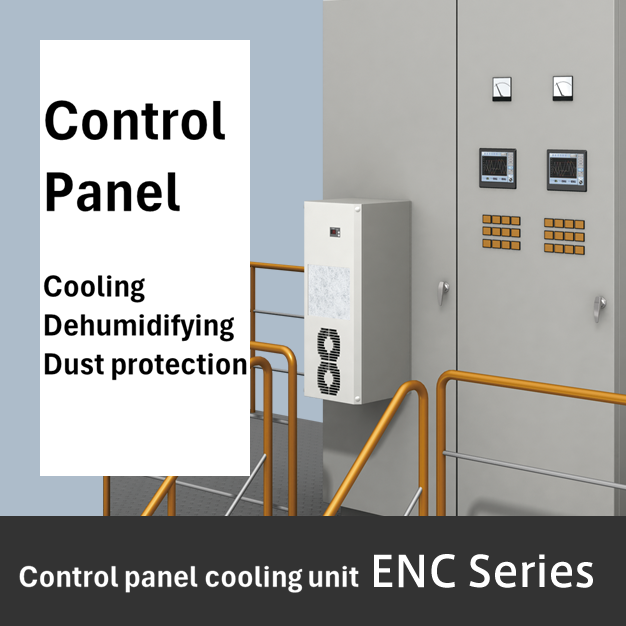Risk of failure due to moisture and condensation
Condensation due to moisture intrusion
Condensation occurs even with a slight temperature difference inside panel with high humidity.
Japan and Southeast Asia have very hot and humid rainy seasons and rainy seasons. The average humidity in Japan varies depending on the region, but it is about 65~70%, especially in June ~ September, the average humidity reaches 75~80%. Recently, there have been frequent sudden increases in humidity due to linear precipitation bands and torrential rains. In addition, in the cutting process of metal parts such as auto parts factories, moisture and coolant are subject to very high humidity conditions.
The panel below such environment also has high humidity in the board, and sudden temperature changes can cause condensation on the surface of the control equipment and electronic equipment in the board, causing short circuits in electrical circuits and sometimes serious failures.
From the graph below, you can see that condensation begins to form with a slight temperature difference as the relative humidity increases. In particular, the temperature difference between day and night and the temperature rise at the start after a holiday are adjacent to the risk of condensation.
Condensation occurrence conditions characteristics

Condensation marks on electronic components on the circuit board


Introducing measures to prevent heat and humidity inside panel!
We will focus on panel problems caused by heat and humidity, and introduce the causes and countermeasures.
Metal corrosion due to moisture
Moisture can cause corrosion on control board and metal contacts.
High humidity causes metal to rust and increases corrosion. It is also said that corrosion accelerates when both humidity and temperature increase. The graph below shows that rust and corrosion progress rapidly when humidity exceeds 60%.
When rust and corrosion become severe, control devices with many metal contacts (relays, electromagnetic switches, etc.) and metal joints are at a higher risk of circuit breaks, poor continuity, and contact malfunctions.
The relationship between ambient humidity and rust occurrence

Metal corrosion in the live terminal block

Open circuit due to corrosion of the coil inside the relay

Insulation deterioration due to moisture
Deterioration of insulation increases the risk of electrical leakage and electric shock.
The insulating properties of insulators deteriorate as humidity increases. panel house many control devices will also experience deterioration of the insulation inside the control devices, power supply cables, and wiring, which is invisible to the naked eye, if used continuously in a high humidity environment.
As insulation deterioration progresses, leakage current increases, not only increasing the risk of electric shock to workers, but also triggering leakage breakers to detect the problem, which can cause machines and equipment to stop operating due to a sudden power supply outage, potentially halting production from inspections to part replacement.
When the insulation coating of power supply cable is infiltrated with moisture or oil mist for a long period of time and expands and contracts due to temperature changes, air bubbles (voids) form inside the cable, causing partial discharge and possibly insulation breakdown.
Relative humidity and insulation properties

Insulation measurement of electrical circuits

Metal Migration
Metal reacts with water and the surface dissolves.
Ion migration is a phenomenon that occurs when water molecules in the air adhere to a metal surface, and when a voltage is applied to the metal, metal ions are dissolved from the surface.
As metal ion migration progresses, it can stick to adjacent conductors (metals), creating the risk of short circuits. Furthermore, the large current that flows the moment the conductors come into contact often burns out the circuit, leading to irreproducible problems.
Migration that occurred between patterns on the substrate

Migration occurred on the bottom side of the mounted component




